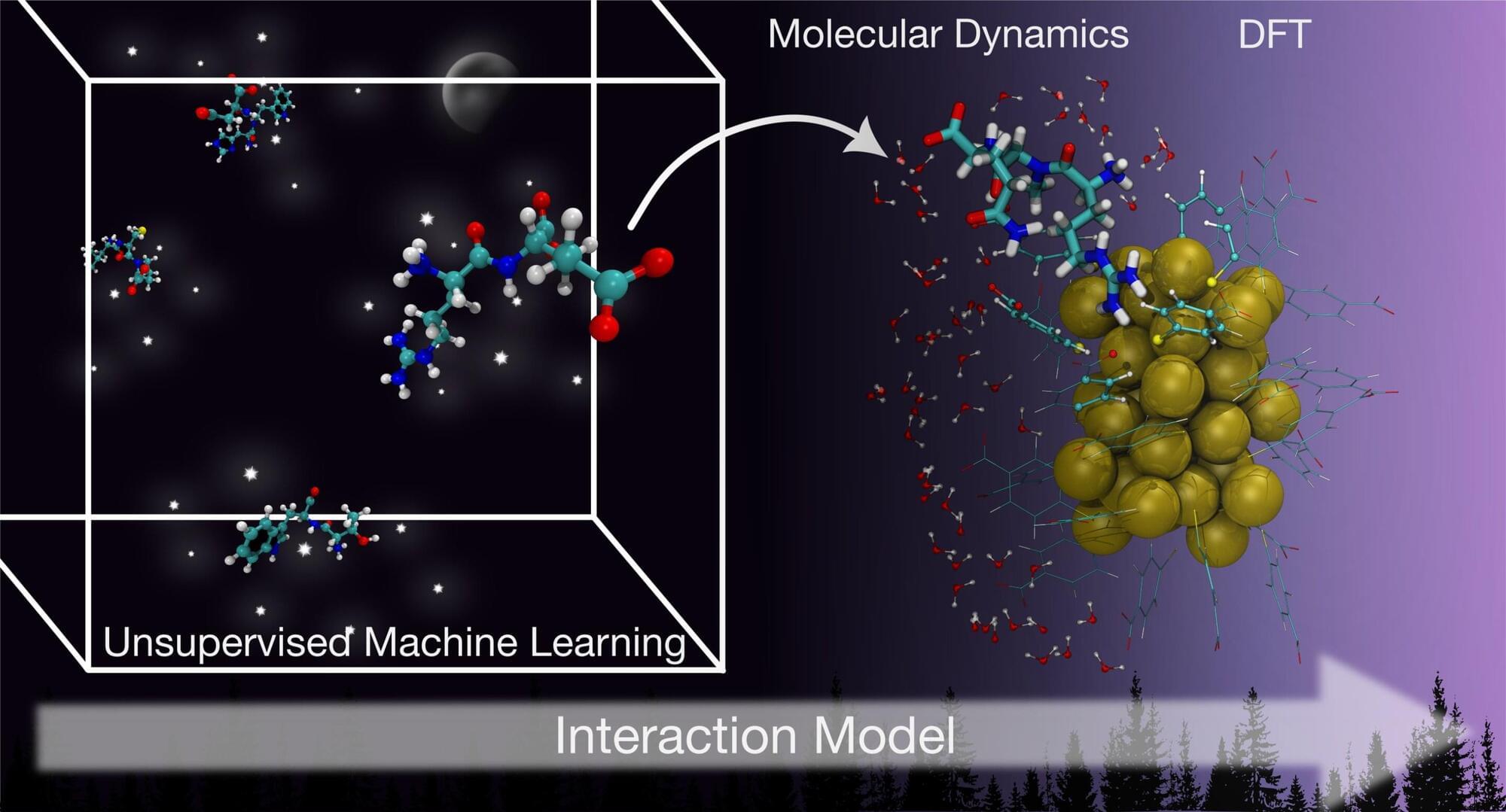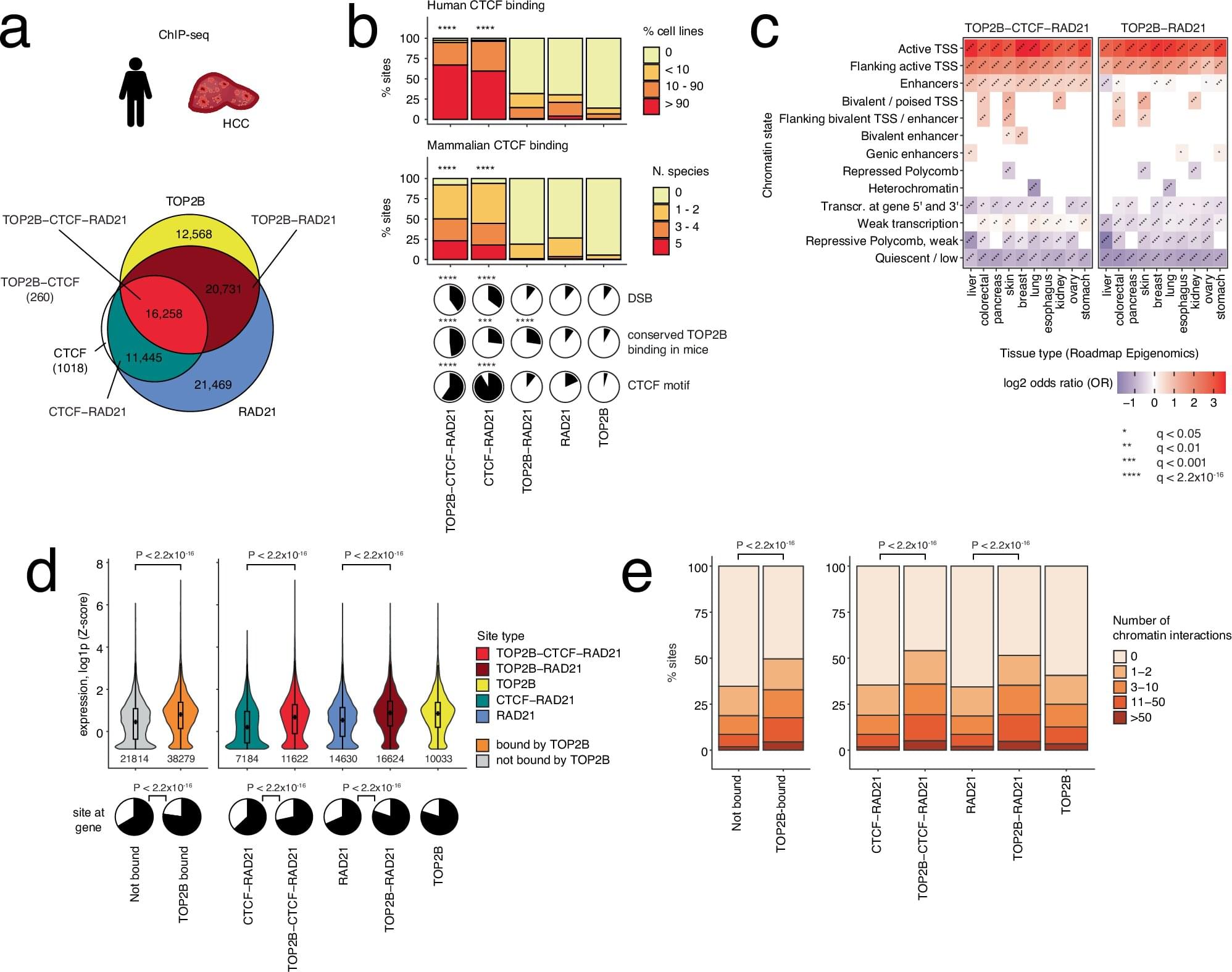Mycelium, the hidden network behind mushrooms, can be grown into durable, low-carbon materials.



Researchers in the Nanoscience Center at the University of Jyväskylä, Finland, have developed a pioneering computational model that could expedite the use of nanomaterials in biomedical applications. The study presented the first generalizable machine-learning framework capable of predicting how proteins interact with ligand-stabilized gold nanoclusters, materials widely employed in bioimaging, biosensing, and targeted drug delivery.
The adsorption of proteins onto nanomaterial surfaces is fundamental to many biological applications, including bioimaging and biosensing to targeted drug delivery. Gold nanoclusters, in particular, have attracted attention thanks to their biocompatibility and tunable optical properties. Yet existing studies that predict how proteins interact with these ligand-protected nanostructures often focus on isolated cases, leaving researchers without a unified model to guide design.
“This gap has created a clear need for general, scalable models capable of capturing the underlying rules of protein–nanocluster binding,” specifies Postdoctoral Researcher Brenda Ferrari from the University of Jyväskylä

Researchers have unveiled a breakthrough technology that could transform the way scientists build and study lab-grown brain tissue models. The innovation, called Cellular RedOx Spreading Shield (CROSS), delivers long-lasting antioxidant protection to stem cells, enabling the reliable production of high-quality extracellular vesicles (EVs) that strengthen neuron-glia networks.
The study, published in the journal Advanced Functional Materials, was led by University of Illinois Urbana-Champaign chemical and biomolecular engineering professor Hyunjoon Kong and chemistry professor Hee Sun Han, and performed by Ryan Miller, currently a post-doctoral fellow at Georgia Tech.
Jonghwi Lee, in the chemical engineering department at Chung-Ang University in South Korea, and Young Jun Kim at the Korean Institute of Science and Technology–Europe, collaborated on the project.

Every living being must cope with a changing world—summer gives way to winter, one year it floods and the next is a drought. It’s obvious that populations of plants and animals must constantly face new challenges, says University of Vermont scientist Csenge Petak. But what’s not obvious is how these changes in the environment affect evolution.
“Do populations benefit from lots of environmental fluctuations, making new generations more prepared to face future changes,” she wondered, “or are they impaired, forced to readapt again and again, never reaching the heights of fitness that the same populations in a stable environment could achieve?”
To explore this question, she and University of Vermont computer scientist Lapo Frati—as well as two other UVM researchers and one at the University of Cambridge—developed a first-of-its-kind study using a powerful computer model that tracks thousands of generations of digital organisms.

It takes just a few milliseconds: A vesicle, only a few nanometers in size and filled with neurotransmitters, approaches a cell membrane, fuses with it, and releases its chemical messengers into the synaptic cleft—making them available to bind to the next nerve cell.
A team led by Professor Christian Rosenmund of Charité—Universitätsmedizin Berlin has captured this critical moment of brain function in microscopic images. They describe their achievement in the journal Nature Communications.
The reality is Deamer and the psychedelics-inspired Damer may very well be right about the origin of life on Earth. They may never win over scientists like Nick Lane, an evolutionary biochemist at University College London, who argues life needed the singular mix of physics and chemistry in hydrothermal ocean vents to originate. As recently as 2024, Lane and chemist Joana C. Xavier of Imperial College London explained in Nature that the wet and dry cycles of hot springs, key to Deamer’s and Damer’s hypothesis, could not lead to “the network of hundreds of reactions that keeps all cells alive.”
However, biologist Jack Szostak, a Nobel laureate, whose lab at the University of Chicago focuses on the origin of life, told me it’s likely that life did begin in volcanically active regions or impact craters on Earth’s surface. “Deep sea hydrothermal vents are not a plausible site for the origin of life,” he said. “Geothermally active areas,” he added, “are attractive because they do provide the environmental fluctuations needed to drive the primordial cell cycle.” Synthetic biologist Kate Adamala, from the University of Minnesota, who builds artificial protocells to probe how life might have first taken shape, agreed. “I’m on Team Dave and Bruce,” she said.
Presented with either criticism or praise of his origin-of-life theory, Damer remained as sanguine as ever. “You’re never going to have a complete understanding of the origin of life on the early Earth, because we just can’t reproduce the exact conditions,” he said. Of course, he believed the hot springs hypothesis would stand the test of time.


New research published in Nature Communications has linked a normal cellular process to an accumulation of DNA mutations in cancer and identified cancer-driving mutations in an underexplored part of the genome.
Led by Dr. Jüri Reimand of the Ontario Institute for Cancer Research (OICR), the study centers around a protein called TOP2B, part of a family of enzymes that serve an important function in cells and are targets of common cancer chemotherapies.
Strands of DNA are long and complex, and they often get looped and tangled. When that happens, TOP2B and other topoisomerase proteins make cuts to DNA strands to help untangle and repair them. But Reimand and colleagues found many genetic mutations present at the sites of these cuts.

Cornell researchers have developed a new transistor architecture that could reshape how high-power wireless electronics are engineered, while also addressing supply chain vulnerabilities for a critical semiconductor material.
The device, called an XHEMT, includes an ultra-thin layer of gallium nitride built on bulk single-crystal aluminum nitride, a semiconductor material with low defect densities and an ultrawide bandgap—properties that allow it to withstand higher temperatures and voltages while reducing electrical losses.
The device was detailed in the journal Advanced Electronic Materials and the research was co-led by Huili Grace Xing, the William L. Quackenbush Professor, Debdeep Jena, the David E. Burr Professor—both in the School of Electrical and Computer Engineering, the Department of Materials Science and Engineering, and the Kavli Institute at Cornell for Nanoscale Science—and doctoral student Eungkyun Kim.

FROSTI revolutionizes mirror control in gravitational-wave detectors, opening the door to a far deeper view of the cosmos. FROSTI is a new adaptive optics system that precisely corrects distortions in LIGO’s mirrors caused by extreme laser power. By using custom thermal patterns, it preserves mirror shape without introducing noise, allowing detectors to operate at higher sensitivities. This leap enables future observatories like Cosmic Explorer to see deeper into the cosmos. The technology lays the groundwork for vastly expanding gravitational-wave astronomy.
Gravitational-wave detectors may soon get a major performance boost, thanks to a new instrumentation advance led by physicist Jonathan Richardson of the University of California, Riverside. In a paper published in the journal Optica, Richardson and his colleagues describe FROSTI, a full-scale prototype that successfully controls laser wavefronts at extremely high power inside the Laser Interferometer Gravitational-Wave Observatory, or LIGO.
LIGO is an observatory that measures gravitational waves — tiny ripples in spacetime created by massive accelerating objects such as colliding black holes. It was the first facility to directly detect these waves, providing strong support for Einstein’s Theory of Relativity. Using two 4-km-long laser interferometers located in Washington and Louisiana, LIGO senses incredibly small disturbances, giving scientists a new way to study black holes, cosmology, and matter under extreme conditions.